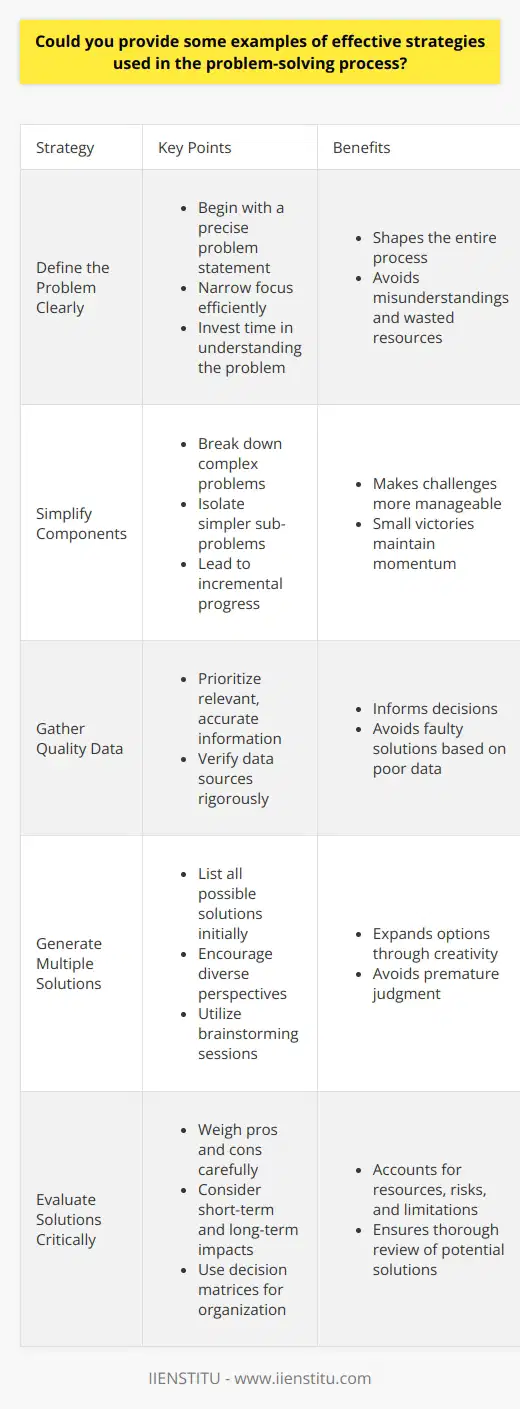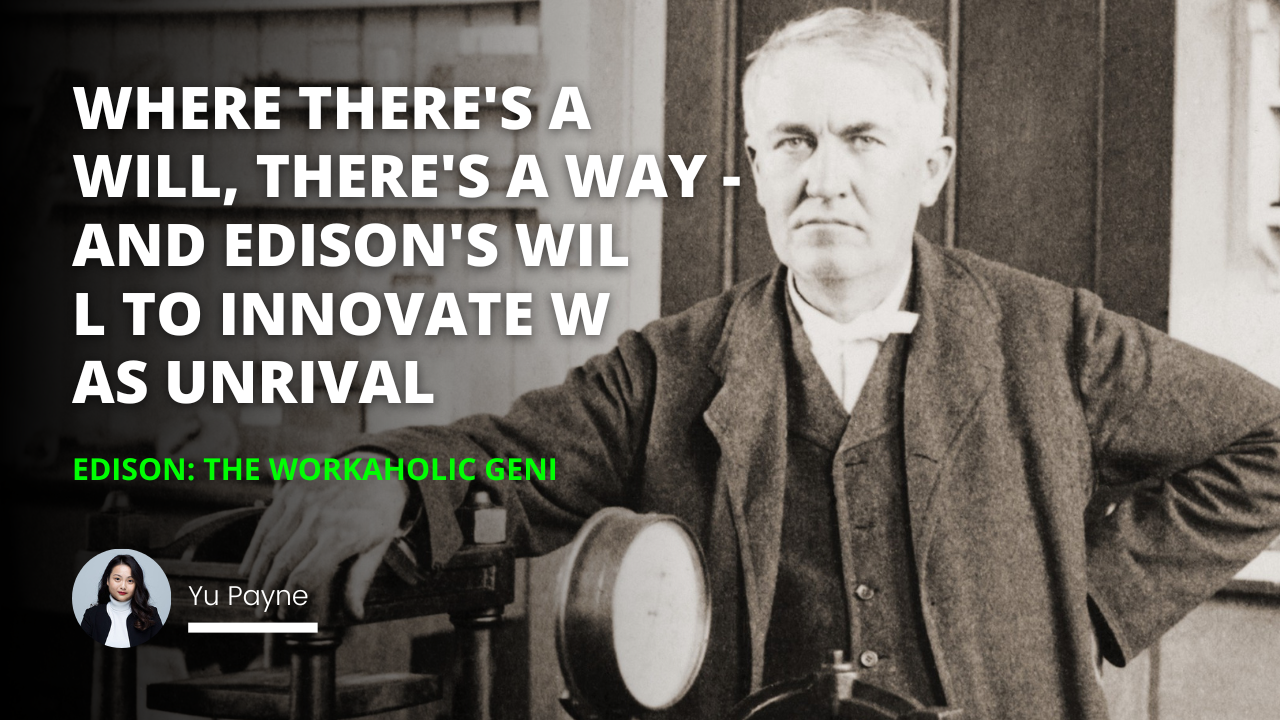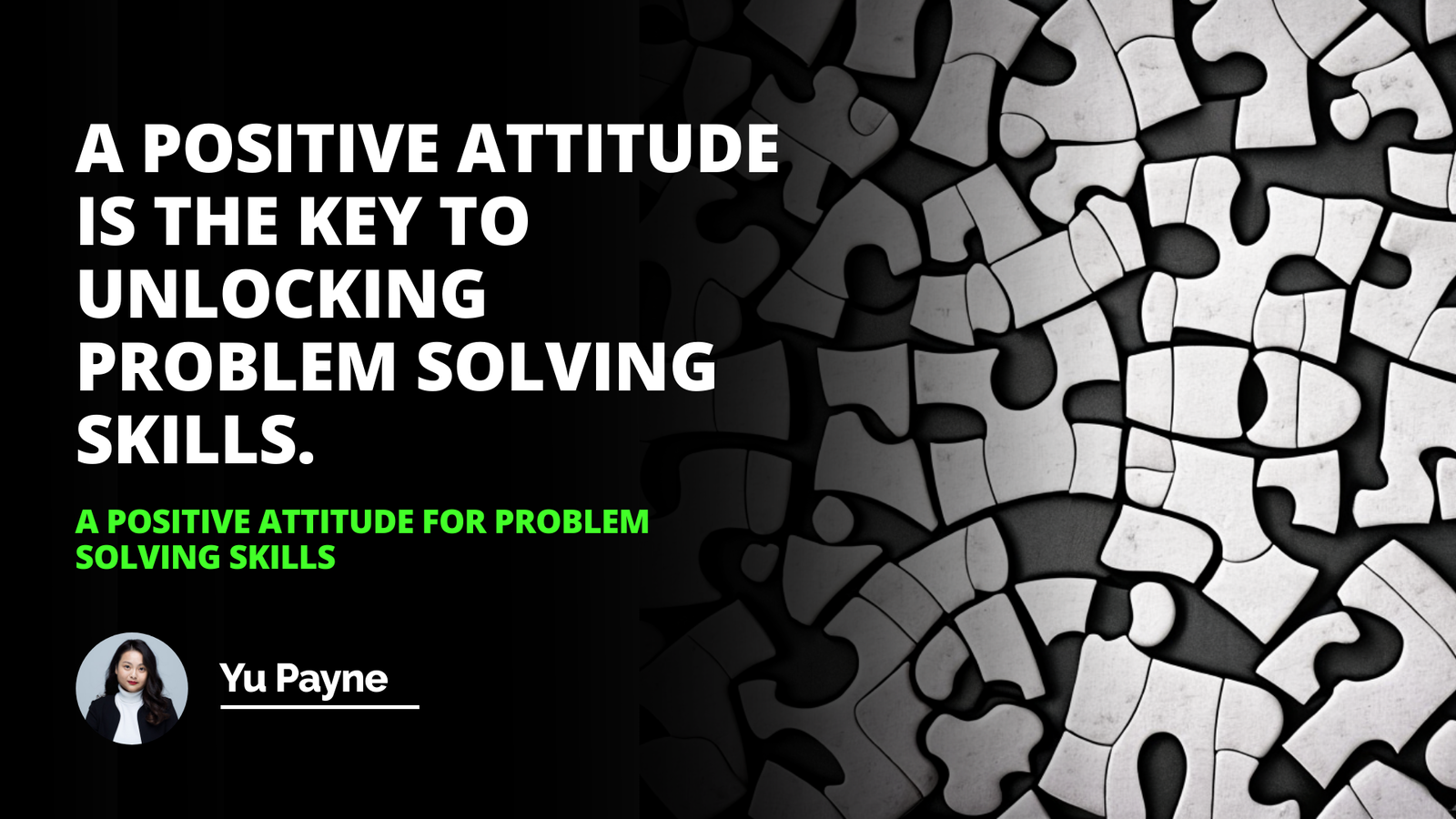
I still remember the evening when my grandfather and I were tinkering in his old garage. The rain was pouring outside, and the sound of droplets hitting the tin roof was almost hypnotic. We were attempting to fix an antique clock that had been in our family for generations. As we carefully examined each cog and spring, he turned to me and said, "Life is a series of puzzles, and it's up to us to find the pieces and put them together." At that moment, I realized the profound importance of problem-solving skills in our everyday lives.
Embracing Problem-Solving in a Complex World
In today's fast-paced and increasingly complex world, the ability to navigate challenges isn't just a nice-to-have—it's essential. Whether we're dealing with minor inconveniences like a flat tire or major life decisions such as changing careers, problem-solving is at the heart of how we adapt and thrive.
The Personal Impact of Problem-Solving Skills
Think about the last time you faced a personal challenge. Maybe it was organizing a family reunion or figuring out how to balance work and studies. Problem-solving skills provide a structured approach to these situations, reducing stress and improving decision-making quality. I've found that when I tackle issues head-on with a clear plan, I feel more confident and in control.
My Journey with Problem-Solving
When I decided to buy my first home, the process seemed overwhelming at first. There were so many factors to consider: location, budget, mortgage options, and the list goes on. By breaking down the problem into smaller, manageable parts—just like my grandfather and I did with that clock—I was able to navigate the real estate maze successfully. I:
1- Identified my needs and wants: What was non-negotiable, and where could I be flexible?
2- Researched the market: I spent weekends visiting open houses and talking to realtors.
3- Reviewed financing options: Comparing different mortgage plans helped me find the best rates.
4- Made an informed decision: With all the information at hand, I felt confident putting in an offer.
This experience not only resulted in me finding the perfect home but also reinforced the value of strong problem-solving abilities in personal endeavors.
The Professional Edge of Problem-Solving
In the workplace, problem-solving is a highly sought-after skill. Employers aren't just looking for candidates with technical expertise; they want individuals who can:
Resolve conflicts among team members.
Innovate to improve products or services.
Overcome obstacles that hinder progress.
Adapt to changing market conditions.
I've witnessed colleagues rise through the ranks not solely because of their qualifications but due to their ability to navigate complex challenges effectively.
A Workplace Challenge and a Learning Opportunity
At my previous job, our team faced a significant setback when a major project fell behind schedule. Morale was low, and the pressure was mounting. I volunteered to lead a task force to address the issue. We started by:
Identifying the root causes: Was it resource allocation? Communication breakdowns? Unclear objectives?
Brainstorming solutions: We held collaborative sessions where all ideas were welcome.
Implementing a targeted plan: This included adjusting timelines, reallocating resources, and improving communication channels.
Reviewing the results: Regular check-ins helped us stay on track and make necessary adjustments.
The project eventually got back on schedule, and the experience taught me invaluable lessons about leadership and the importance of a systematic approach to problem-solving.
The Role of Problem-Solving in Modern Society
On a larger scale, problem-solving drives innovation and progress across industries. It's the bedrock of how societies evolve and adapt to new challenges.
Tackling Global Issues Through Problem-Solving
Consider daunting global challenges like climate change, public health crises, or economic instability. Addressing these multifaceted problems requires:
Collaborative efforts: Governments, businesses, and communities working together.
Creative thinking: Traditional solutions often fall short, necessitating innovative approaches.
Strategic planning: Long-term visions with adaptable strategies.
For instance, the collective response to environmental issues has led to advancements in renewable energy technologies, policy reforms, and increased public awareness. As individuals, we contribute by making conscious choices—like reducing waste or supporting sustainable practices—that cumulatively make a significant impact.
The Problem-Solving Process Unveiled
"A problem well stated is a problem half solved," said Charles Kettering, an eminent inventor and engineer. Understanding the steps involved in problem-solving can enhance our ability to tackle challenges efficiently.
Step 1: Identifying the Problem
It might sound straightforward, but accurately identifying the problem is often the most critical step. It involves:
Observing the situation carefully.
Asking probing questions: What is happening? Why is it an issue?
Distinguishing between symptoms and root causes.
For example, if a business is losing customers, the symptom is declining sales, but the root cause could be poor customer service, outdated products, or aggressive competition.
Step 2: Analyzing the Problem
Once the problem is identified, analyzing it thoroughly is essential. This means:
Gathering relevant data: Facts, figures, and evidence.
Breaking down the problem into smaller components.
Identifying patterns or trends.
Tools like SWOT analysis (assessing strengths, weaknesses, opportunities, and threats) or the 5 Whys technique (asking "Why?" five times to drill down to the root cause) can be incredibly helpful.
Step 3: Developing Potential Solutions
Here's where creativity comes into play. Generating a range of possible solutions involves:
Brainstorming sessions: Encouraging open and judgment-free idea generation.
Thinking outside the box: Considering unconventional approaches.
Leveraging collective intelligence: Collaborating with others to gain diverse perspectives.
Remember, the goal is to produce as many ideas as possible before evaluating them.
Step 4: Implementing and Reviewing the Solution
After selecting the most viable solution:
1- Develop an action plan: Outline the steps needed to implement the solution.
2- Assign responsibilities: Who will do what and by when?
3- Execute the plan: Put the solution into action.
4- Monitor and review: Evaluate the effectiveness and make adjustments if necessary.
This step is crucial because even the best-laid plans can encounter unforeseen obstacles.
Real-Life Applications of Problem-Solving
Case Study: Organizational Problem-Solving
In my tenure at a non-profit organization, we faced the challenge of dwindling volunteer participation. This threatened our ability to deliver essential community services. Applying the problem-solving process, we:
Identified the Problem: Fewer volunteers were signing up for events.
Analyzed the Issue: Surveys revealed that volunteers felt underappreciated and overworked.
Developed Solutions:
Implement a volunteer recognition program.
Offer flexible scheduling options.
Provide additional training and support.
Implemented and Reviewed:
Launched a "Volunteer of the Month" award.
Adjusted event schedules based on volunteer availability.
Held monthly training workshops.
Over the next quarter, volunteer retention improved by 30%, allowing us to expand our outreach programs.
Case Study: Personal Problem-Solving
On a personal note, I once struggled with maintaining a healthy work-life balance. The constant tug-of-war between career ambitions and personal well-being was taking its toll. Applying the problem-solving steps:
1- Identified the Problem: Excessive work hours were leading to burnout.
2- Analyzed the Situation: Time logs showed that I was spending too much time on low-priority tasks.
3- Developed Solutions:
Prioritize tasks using the Eisenhower Matrix.
Set strict work hours and unplug afterward.
Incorporate relaxation techniques into my routine.
4. Implemented and Reviewed:
Began each day by listing and ranking tasks.
Turned off work notifications after 6 PM.
Started practicing yoga twice a week.
The result? My productivity increased, and I felt more energized and content outside of work.
Enhancing Problem-Solving Skills
Improving problem-solving abilities is a continuous journey. Here are some strategies that have worked for me:
Engage in lifelong learning: Taking courses, attending workshops, or pursuing online certificate programs can sharpen your skills.
Practice mindfulness: Techniques like meditation can improve focus and clarity.
Seek feedback: Constructive criticism from others can provide new insights.
Embrace challenges: Viewing obstacles as opportunities to grow enhances resilience.
The Connection to Reassignment Requests
Recently, a colleague sought advice on submitting a reassignment request letter to better align her role with her career goals. Through problem-solving, we outlined tips and information to strengthen her case:
Clearly state the reason for the reassignment.
Highlight how the new role benefits both her and the organization.
Provide evidence of her qualifications and accomplishments.
Express flexibility and willingness to support the transition.
She followed this approach, and her request was approved, illustrating how problem-solving skills can be applied to career advancement.
Conclusion: The Ongoing Journey of Problem-Solving
Reflecting on my grandfather's wisdom, I've come to realize that problem-solving isn't just a skill—it's a mindset. By approaching life's puzzles with curiosity and determination, we not only find solutions but also discover more about ourselves and the world around us.
In our increasingly complex and fast-paced world, honing our problem-solving abilities equips us to tackle challenges head-on and seize new opportunities. Whether it's through personal experiences, professional endeavors, or broader societal issues, the ability to navigate problems effectively is invaluable.
I encourage you to embrace this journey. Share your own insights, experiences, and reflections on problem-solving. Together, we can build a community that supports and uplifts one another as we navigate life's intricate maze.
References
Covey, S. R. (1989). The 7 Habits of Highly Effective People. Free Press.
Michalko, M. (2006). Thinkertoys: A Handbook of Creative-Thinking Techniques. Ten Speed Press.
Duhigg, C. (2012). The Power of Habit: Why We Do What We Do in Life and Business. Random House.
de Bono, E. (1970). Lateral Thinking: Creativity Step by Step. Harper & Row.
Kahneman, D. (2011). Thinking, Fast and Slow. Farrar, Straus and Giroux.
Frequently Asked Questions
What are the main stages in a problem-solving process?
Understanding the Problem-Solving Process
Identifying the Problem
Effective problem solving begins with identification. Individuals must precisely recognize the issue. Accuracy in defining the problem sets the right direction. Clarity is crucial to avoid ambiguity. This stage requires careful thought and analysis.
Generating Alternative Solutions
Once identified, brainstorming commences. It involves thinking broadly and freely. Creativity is key here. Participants should generate multiple potential solutions. Quantity trumps quality in this stage. Diverse perspectives enrich the pool of solutions.
Evaluating and Selecting Alternatives
Subsequently, analysis of the alternatives occurs. One must assess the feasibility of each solution. Criteria for evaluation include cost, time, and resources. This requires critical thinking skills. The goal is to narrow down to optimal solutions. Those with the highest success potential move forward.
Implementing the Solution
After selection, implementation begins. This step turns solutions into action. Adequate resources and proper guidance are necessary. Alignment with the overarching strategy is vital. Monitoring progress is crucial during this phase.
Monitoring and Reviewing
The final stage involves assessment. It determines the effectiveness of the solution. Feedback mechanisms should be in place. Learnings from this stage inform future problem-solving efforts. Continuous improvement becomes possible through regular monitoring.
Reflecting on the process is invaluable. It ensures that the approach to solving problems evolves. Growth in problem-solving capabilities marks progress.

How do different problem-solving strategies influence the outcome of this process?
Assessing Problem-Solving Strategies
Researchers have long studied problem-solving strategies. These strategies critically shape outcomes. Strategies vary widely in their approaches. Each approach offers distinct advantages and disadvantages. They influence how individuals and groups tackle problems.
Types of Strategies
Common problem-solving strategies include algorithms, heuristics, trial and error, and insight. Algorithms involve step-by-step procedures. They guarantee a solution. Heuristics are rule-of-thumb strategies. They simplify complex problems. Trial and error involves attempting multiple solutions. Insight refers to the sudden realization of a problem's solution.
Impact on Outcome
Each strategy impacts the outcome differently. An algorithmic approach ensures accuracy. Yet, it may become time-consuming. Heuristics provide quicker solutions. But they risk inaccuracies. Trial and error may lead to unexpected solutions. Yet, it often requires significant effort. Insight leads to rapid solutions. However, it can't be forced.
Considerations
Selecting a strategy depends on the problem's nature. It also depends on the desired speed of resolution. Moreover, the available resources play a role. Personal experience and cognitive style also influence strategy choice.
Strategy Effectiveness
Effectiveness depends on context. Algorithms suit well-defined problems. Heuristics work well for complex, real-world issues. When solutions are not apparent, trial and error helps. For complex problems that suddenly become clear, insight is key.
Adaptation and Flexibility
One must adapt strategies as needed. Flexibility enhances problem-solving efficiency. This involves recognizing when a strategy fails. It also requires shifting to another method swiftly.
Different strategies lead to different outcomes. Wise strategy selection is crucial. It requires understanding the problem and context. Flexibility and adaptability ensure efficient problem-solving. Each strategy has its place in the problem solver's toolkit.

Could you provide some examples of effective strategies used in the problem-solving process?
Effective Problem-Solving Strategies
Understanding problem-solving strategies is crucial. Scholars often debate their complexity. Effective techniques vary across disciplines. However, common strategies emerge for their utility. We will explore some notable ones.
Define the Problem Clearly
Clarity is key. Begin with a precise problem statement. This shapes the entire process. It narrows focus efficiently. Misunderstanding the problem wastes resources. Therefore, invest time here.
Simplify Components
Break down complex problems. Isolate simpler sub-problems. This makes challenges more manageable. It leads to incremental progress. Small victories maintain momentum.
Gather Quality Data
Data informs decisions. Prioritize relevant, accurate information gathering. Poor data leads to faulty solutions. Therefore, verify data sources rigorously.
Generate Multiple Solutions
Creativity expands options. List all possible solutions initially. Avoid premature judgment. Diverse perspectives enrich this phase. Brainstorming sessions prove beneficial here.
Evaluate Solutions Critically
Review potential solutions critically. Weigh pros and cons carefully. Short-term and long-term impacts matter. Consider resources, risks, and limitations. Decision matrices help organize this step.
Execute with a Plan
Solid plans guide action. Detail steps. Define timelines. Assign responsibilities. Execution without planning breeds chaos. Conversely, good plans facilitate smooth implementation.
Monitor and Adapt
Feedback loops are essential. They offer real-time insight. Monitor outcomes against expectations. Adapt plans when necessary. This ensures alignment with goals.
Review Outcomes
Assessment follows execution. Did the solution work? Understanding outcomes enables learning. It informs future problem-solving efforts. Sometimes, it even redefines the problem.
These strategies, when applied rigorously, can significantly enhance problem-solving efforts. They require discipline and a willingness to adapt. Nevertheless, they are universally applicable and function as a strong foundation for effective decision-making and problem-solving across various contexts.



